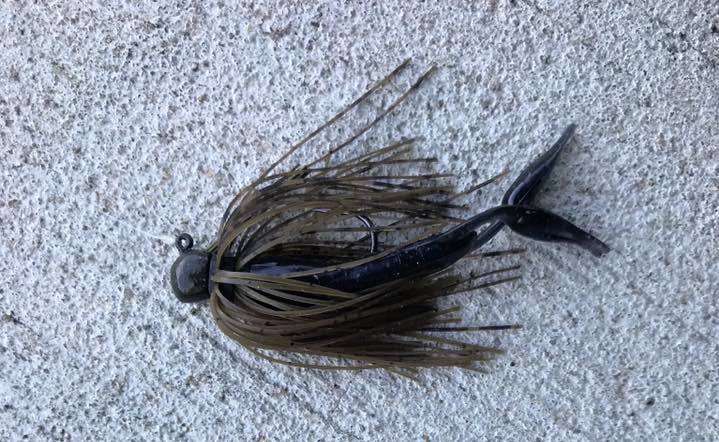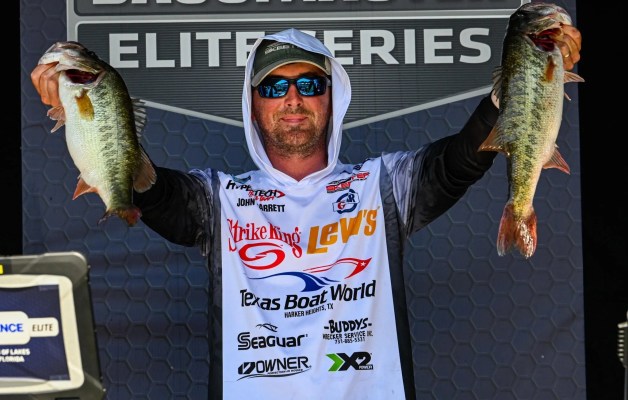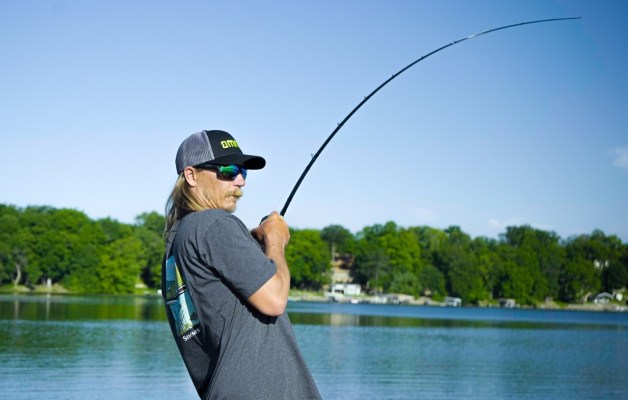
Our last Bassmaster Elite Series tournament, the 2018 Berkley Bassmaster Elite at Lake Oahe presented by Abu Garcia, was on a big, deep body of water, and it was under tough, storm-related conditions. Nevertheless, I managed to catch enough to finish 29th in the event.
I’m going to tell you how I did it because I love to share information. The more fish we all catch, the more we’ll all fish. The more we all fish, the more popular our sport will become. That’ll keep it alive for generations to come.
My primary bait during the three days I competed was a relatively new bait, a micro jig. It’s an inexpensive lure that anyone can use who has medium or medium-light action spinning tackle.
We’ll start the discussion by looking at what a micro jig isn’t. It’s not a small jig or an ultralight jig. Those lures have been around forever and for all the fish they’ve caught over the years they aren’t true micro jigs.
A true micro jig is specifically designed to make a finesse presentation with a very small lure, but one that’ll handle bigger bass. For starters it’ll have a thin cut skirt. What I mean by that is that the material will be cut into narrow strips, and it won’t be as thick as most skirts.
If the skirt is right, check for a sharp, thin wire hook and a plastic weedguard that seems to be almost too flexible. I like weights between 1/32- and 1/8-ounce.
I used mine in three ways. The first was pretty much like a Ned rig. I’d throw it out, let it fall to the bottom, and then drag it real slow for a short distance. I did this on open, mostly barren flats. It took less than a minute to find out if there was a quality smallmouth near it.
The second way I fished it was around isolated boulders. I could see them in relatively shallow water. They looked like dark spots. I’d throw to all four sides and let the bait fall. Once it was down I’d hop and drag it to make sure it brushed up against the rock. That really subtle noise, along with the slow and easy movement got the attention of several keeper bass.
The third way I fished my micro jig was like a swimbait. I’d toss it as far as possible, let it fall to where I wanted to fish, and then bring it back slow and steady in a straight line. This was a killer in clear water areas where the bass were suspended, actively feeding on baitfish or in current.
Micro jigs are not for casting tackle. They’re too light. My choice at Oahe — and that’ll probably not change regardless of where I fish one — was a medium action rod between 7 foot, 2 inches and 7 foot, 6 inches. I mounted a 20 or 30 size reel on it and spooled up with light braid and a fluorocarbon leader.
The jigs I used were the new ones I helped design made by Missile Baits.
You don’t necessarily need big, expensive lures and tackle to be a successful bass angler. Fish the right lure, at the right time, under the right conditions. You’ll catch your share.
Mike Iaconelli’s column appears weekly on Bassmaster.com. You can also find him on Facebook and Twitter or visit his website at, mikeiaconelli.com.





